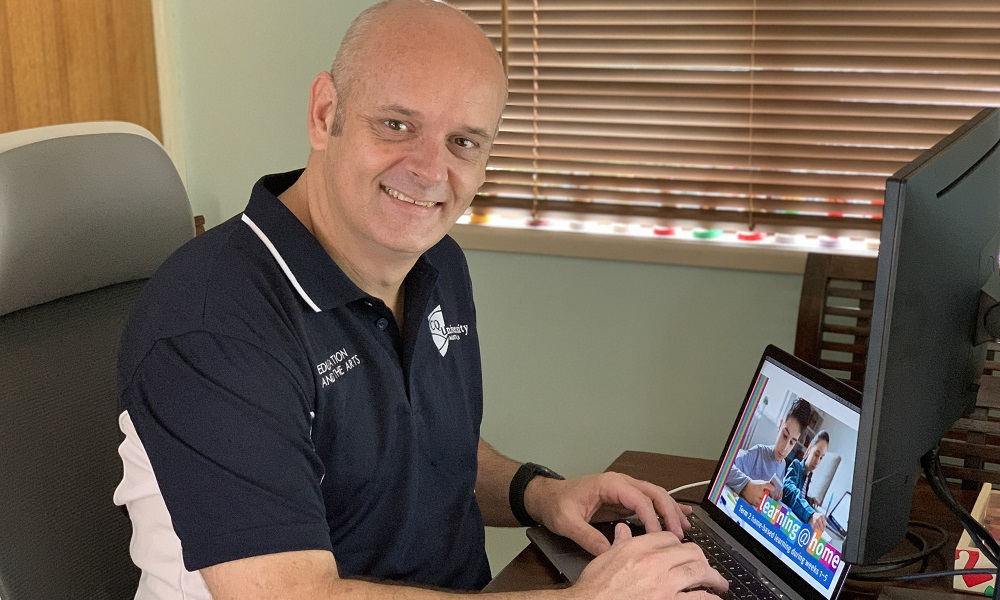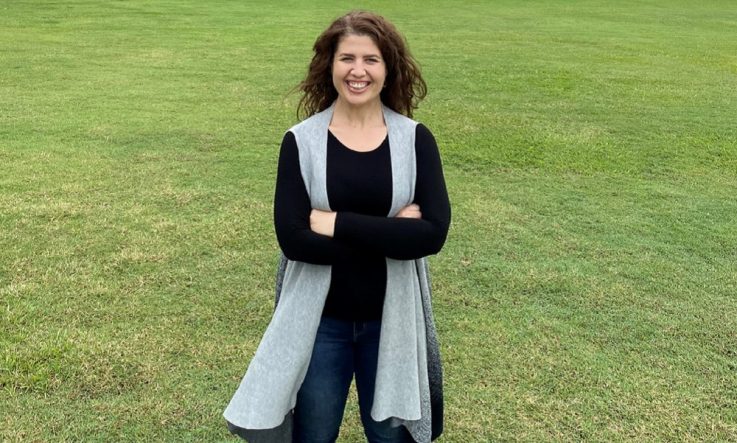Pre-service teachers in Queensland who have had the final year of their course disrupted by COVID-19, have been creating and delivering online learning resources to students, as an alternative to school placements.
The Queensland Department of Education's ‘learning@home' initiative was established to make resources available for students and their parents/carers to access during remote teaching periods. Pre-service teachers were invited to contribute learning materials which would complement those already provided as part of the initiative.
The involvement of pre-service teachers in this project was made possible through the work of universities and the Queensland College of Teachers. The aim was to provide an alternative to in-school placements for students completing their final year of a teaching course and assist them in developing skills to plan for remote learning.
‘COVID-19 has had a huge impact on the Master of Teaching students and all pre-service teachers in general. A large number of pre-service teachers were unable to enter schools to complete their mandatory in-school practicum experience,' Associate Professor Rickie Fisher tells Teacher.
Fisher is the Head of College, Education and Head of Course, Master of Teaching (Secondary) at CQUniversity. Students in their final stages of their Master of Teaching course at CQUniversity, which he oversees, were involved in creating learning materials for learning@home.
‘This initiative enabled pre-service teachers to complete an experience comparable to an in-school experience and enabled them to graduate and hence gain employment as a graduate teacher. This was a win-win situation for universities, pre-service teachers and employers alike,' Fisher says.
Pivoting to alternative learning arrangements
Louise Smart and Alexandra Kiem, two students completing their Master of Teaching degree at CQUniversity, say that although it's disappointing they weren't able to spend more time in schools, creating these resources was a useful alternative.
‘The mental preparation for the final praxis was well advanced and as I was due to return to the same school, I had specific planning in place to cater to each student. To have to drop that and then suddenly immerse myself in a new pathway to graduation was hectic,' Smart tells Teacher.
‘Being forced down this path has been good for me as I am now more open to using technology in my lessons. Really, I can see how technology will make learning more engaging and relevant to students.'
Smart says the opportunity to create resources, particularly audio and videos elements, allowed her to reflect on her communication style and how her lessons are received.
Pre-service teacher Alexandra Kiem also felt the chance to create resources afforded unique learning opportunities.
‘The freedom in creating content aligned to the curriculum in a team was something that was thoroughly enjoyed and beneficial for all participants, and something that would not have occurred in a classroom placement,' Kiem tells Teacher. ‘In previous placements, I found that the freedom in developing lessons was minimal as the planning for the entire term, semester [and] year had been completed prior to any involvement with the class from a pre-service teaching perspective.'
Creating a wide range of resources
The pre-service teachers participating in this initiative selected an existing resource on learning@home that they would use to create complementary learning materials. They worked in groups to produce a series of files accompanied by audio and video.
‘This [the audio and video elements] ensured parents were able to understand the resource and for school-aged children to engage in an alternative medium to unpack the content and concepts within the resource,' Fisher explains.
Kiem created three mathematics lessons for Prep students which mostly focused on supporting a parent in assisting their child to complete the lesson outlined by the Department of Education. Kiem also produced a Health and Physical Education video lesson for Year 2 students which centred on healthy eating.
‘I created a video montage of potential rainbow food plates that I incorporated as a challenge for students to participate in with the support of their parents. It was a multimedia creation of spoken content, visual content, physical movement and educational activities/challenges,' she explains.
Smart created a video for Year 4 students on the topic of sustainability, which formed part of a series along with videos created by two other pre-service teachers.
‘Initially I was devastated to think that I would need to record myself teaching for this to be handed over to potentially end up on TV. Then we realised we could use computer animation software instead,' she shares. ‘So, after a quick search of available programs, we settled on one and set about creating a video of the topic. Mine was first in the series and I focused on reducing plastic in our lunchboxes. The second video focused on reducing water consumption in the home. The third and final video addressed recycling.'
Fisher says developing these resources required pre-service teachers to apply their knowledge in a different way and pushed them to think about creative ways to deliver teaching in unique circumstances. Delivering content to students in ways that don't involve traditional face-to-face teaching will be embedded in the Master of Teaching course going forward.
‘The task the students completed has proven to be a real benefit for pre-service teachers to unpack resources that can be used in isolation from a classroom teacher,' he shares. ‘In doing so, it has taught pre-service teachers a range of skills for their level of planning where they have had to think differently about their planning to ensure it has a level of detail they would not necessarily have for face-to-face teaching.
‘Whilst the project can never replace the in-school practicum, the project ensured the pre-service teachers possess the knowledge and skills to deliver teaching that is appropriate and is learner centred,' he says.
Louise Smart says the opportunity to create online learning resources, particularly the audio and videos elements, allowed her to reflect on her communication style and how her lessons are received.
How often do you reflect on your own classroom practice and review your communication style? How does this inform the way you deliver lessons?



